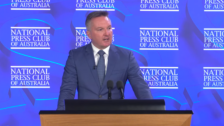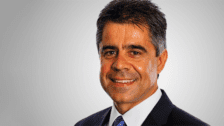SMSF market twists itself into new shapes, but will advisers follow?
SMSFs have long been a bone of contention for the superannuation and investment industry. Having started more than 30 years ago, the sector now speaks for as much as one third of the more than $3 trillion held in the superannuation environment.
SMSF numbers have remained steady for the last six years, with ATO data showing growth of 7 per cent between 2017 and 2022 amid growing popularity of SMSFs among the younger generation. This has been offset, however, by a marked shift away from SMSFs by the wealthy.
Investors are spoiled for choice when it comes to superannuation, with innovation and evolution finally coming to the industry super, corporate, platform and SMSF sector in recent years. The lure of default super contributions has seen more investment in technology, better and more and more customer-centric platforms, and also fee compression to the benefit of clients.
For any financial adviser focusing on supporting self-funded investors through their retirement journey, the vast majority will either come with their own SMSF, or, if they have a balance exceeding $1.5 million, be well-suited to one.
Yet in recent months we have seen increasing pushback from retirees and those within this self-funded cohort. Many are now shying away from SMSFs due to the perceived complexity and additional work.
There are no doubt many more reasons for this, with some people having failed at managing the underlying investments themselves of a fund, and others simply put off by negative perception (driven by the massive industry super fund sector) around risk and complexity. For busy professionals, in particular, the time and involvement are likely a key reason, despite the ability to outsource many roles to a financial adviser and accountant.
While the benefits of an SMSF are clear, that being the ability control every investment decision, the fact that the administration cost of running an SMSF is a fixed cost, rather than a percentage-based one, and the flexibility to execute numerous tax-saving strategies, improvements in other parts of the superannuation sector may be levelling the scorecard.
Industry funds continue to benefit from a perception of lower cost and scale, while the platform sector has innovated significantly in recent years, making the differences harder to see. Greater flexibility from platforms has introduced the ability to hold more unique investments (previously only the realm of SMSFs), and to do so with significantly lower administration work.
It seems that while the older generations may be tilting towards simplification, the younger generations are looking for control and engagement. The ATO reported in 2022 that 44 per cent of people starting SMSFs were under 45 with one third between the ages of 35 and 45. Younger investors are clearly underwhelmed by the default funds they are attached to, and increasingly looking to interact more closely with their investments.
Naturally, the best outcome depends on each client and their objectives, but this is no doubt an intriguing and important trend to watch for advisers at the coalface of the industry.











